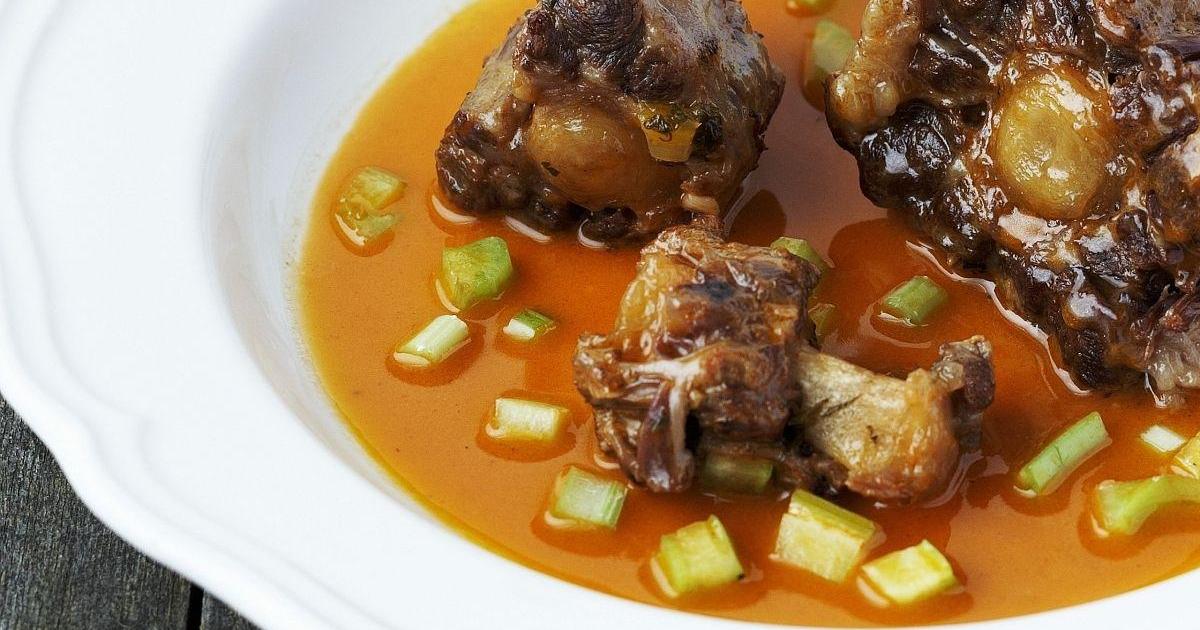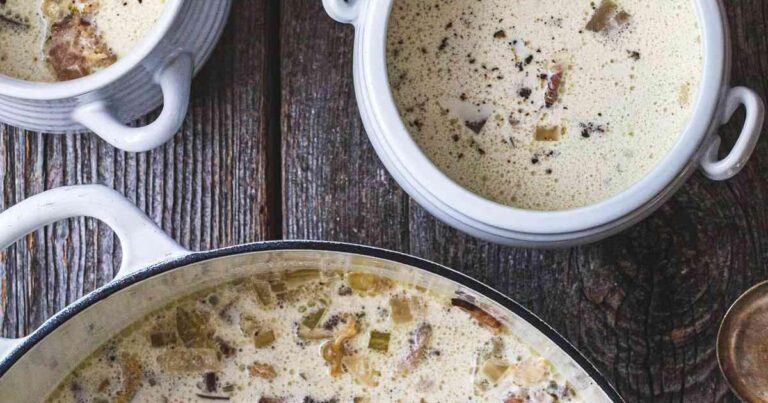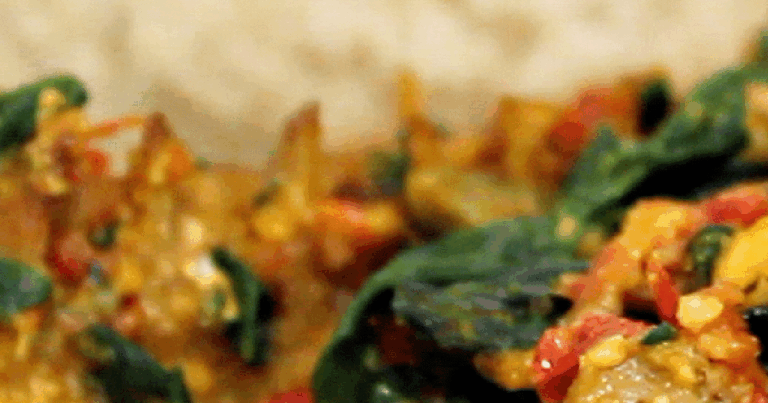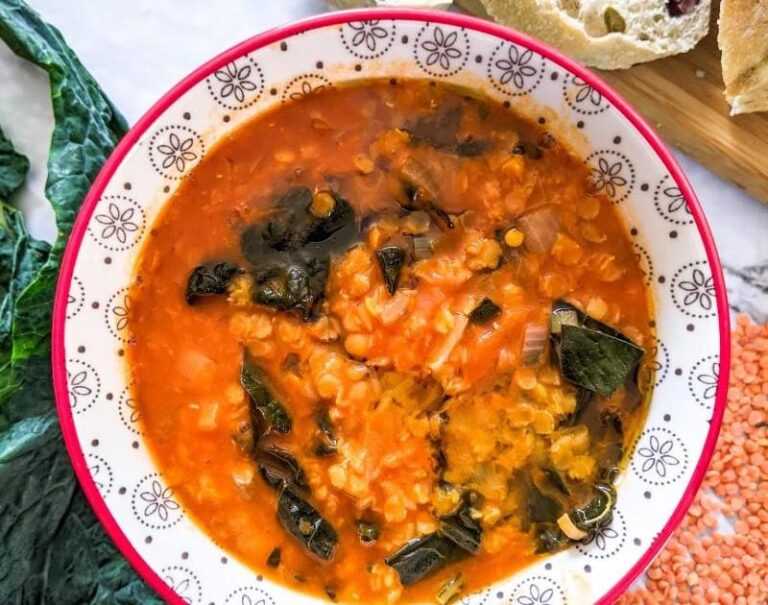Oxtail Soup with Leek
Cozy Up with Seolleongtang: A Traditional Korean Oxtail Soup
Looking for a deeply flavorful and comforting soup? Look no further than Seolleongtang (설렁탕), a classic Korean oxtail soup known for its milky, rich broth and tender meat. This isn’t a quick weeknight meal, but the hours of slow simmering are absolutely worth the incredible depth of flavor you’ll achieve. Traditionally served as a nourishing meal for special occasions or to restore health, Seolleongtang is a true labor of love – and a delicious one at that!
What makes Seolleongtang special? The key is the long, slow cooking process. This extracts maximum collagen from the oxtail, creating a broth that’s incredibly rich and almost creamy in texture. The resulting soup is subtly seasoned, allowing the natural flavors of the oxtail and vegetables to shine. It’s then customized at the table with a variety of toppings, making it a truly interactive and satisfying meal.
A Bit of History
Seolleongtang’s origins are rooted in the Joseon Dynasty. It was originally a dish enjoyed by royalty, but over time, it became accessible to all. The name “Seolleongtang” literally translates to “soup for the elderly,” highlighting its traditional use as a nourishing meal for those needing strength and recovery.
Tips for the Best Seolleongtang:
- Oxtail Quality: Use high-quality oxtail for the best flavor. Look for pieces with plenty of meat and marrow.
- Skimming is Key: During the initial boil and throughout the simmering process, skim off any foam or impurities that rise to the surface. This ensures a clear and clean-tasting broth.
- Patience is a Virtue: Don’t rush the simmering process! The longer it simmers, the more flavorful the broth will become.
- Overnight Chill: Chilling the broth overnight allows the fat to solidify, making it easy to remove. This results in a lighter, cleaner-tasting soup.
- Customize Your Bowl: Don’t be afraid to experiment with different toppings! Kimchi, scallions, and a dash of gochugaru (Korean chili flakes) are classic choices, but feel free to add whatever you enjoy.
What to Serve with Seolleongtang:
Traditionally, Seolleongtang is served with a bowl of white rice and a variety of banchan (side dishes). Kimchi is a must-have, and other popular choices include seasoned spinach, pickled radish, and stir-fried vegetables.
Frequently Asked Questions:
- Can I use beef broth instead of water? While you can, using water allows the oxtail to impart its full flavor to the broth. Beef broth will add flavor, but it won’t be as authentic.
- How long can I store Seolleongtang? Seolleongtang can be stored in the refrigerator for up to 3 days. The broth will solidify as it cools, but it will taste just as good when reheated.
- Can I freeze Seolleongtang? Yes, Seolleongtang freezes well. Store it in an airtight container for up to 3 months.
- What is gochugaru? Gochugaru is Korean chili flakes. It adds a subtle heat and vibrant color to dishes. You can find it at most Asian grocery stores or online.
- Is Seolleongtang spicy? Traditionally, Seolleongtang is not spicy. However, you can add gochugaru to your individual bowl to adjust the heat level to your liking.
Get ready to embark on a culinary journey with this comforting and flavorful Korean classic. The time and effort are well worth the reward – a truly unforgettable bowl of Seolleongtang!
Korean Oxtail Soup (Seolleongtang)
Ingredients
- 3-4 lbs Oxtail
- 2 slices Ginger
- 2 tbsp Shaoxing wine
- 1 large Leek cut into rounds
- 1 large Daikon radish sliced
- 3 cloves Garlic minced
- 2 tbsp Soy sauce
- 5-6 stalks Scallion finely chopped
- to taste Kimchi
- to serve White rice
- to taste Gochugaru (Korean chili flakes)
Instructions
- Soak oxtail in water for at least two hours, until all the blood seeps out of the bone. Drain.
- Place oxtail, ginger, shaoxing wine, and water in a pot and bring to a boil. Cook for 2-3 minutes, then drain.
- Add oxtail and ginger back in a new pot of cold water, making sure to cover bones completely. Add leek rounds. Bring to a boil, then reduce heat to medium. Cover and continue boiling for 3-4 hours, adding more water if necessary. A moderate boil (not a simmer) should be continuous throughout the cooking period.
- At the 3 hour mark, add in daikon slices and continue boiling for another 45 minutes. Check to see if the daikon is soft but not mushy. Remove daikon and set aside.
- If the beef has started to fall off the bones, set that aside and reserve. Continue simmering the bones if you want them even more tender.
- Remove broth and set aside in a large bowl. Cover bones in pot with water and bring to a rolling boil and keep at that moderate boil for another 3 hours. Remove from heat and pour broth into that same bowl of reserved broth.
- Cover with plastic wrap and place in fridge overnight. This allows the fat to solidify and float to the top.
- Remove fat in the morning. Pour back into a pan and reheat (including remaining bones). Meanwhile, make rice. Mix beef with garlic, scallions, soy sauce, and gochugaru, if using.
- Divide rice into bowls. Ladle oxtail broth over rice. Serve with beef, radish, fresh scallions, and kimchi.
Discover more from Resoupies
Subscribe to get the latest posts sent to your email.






